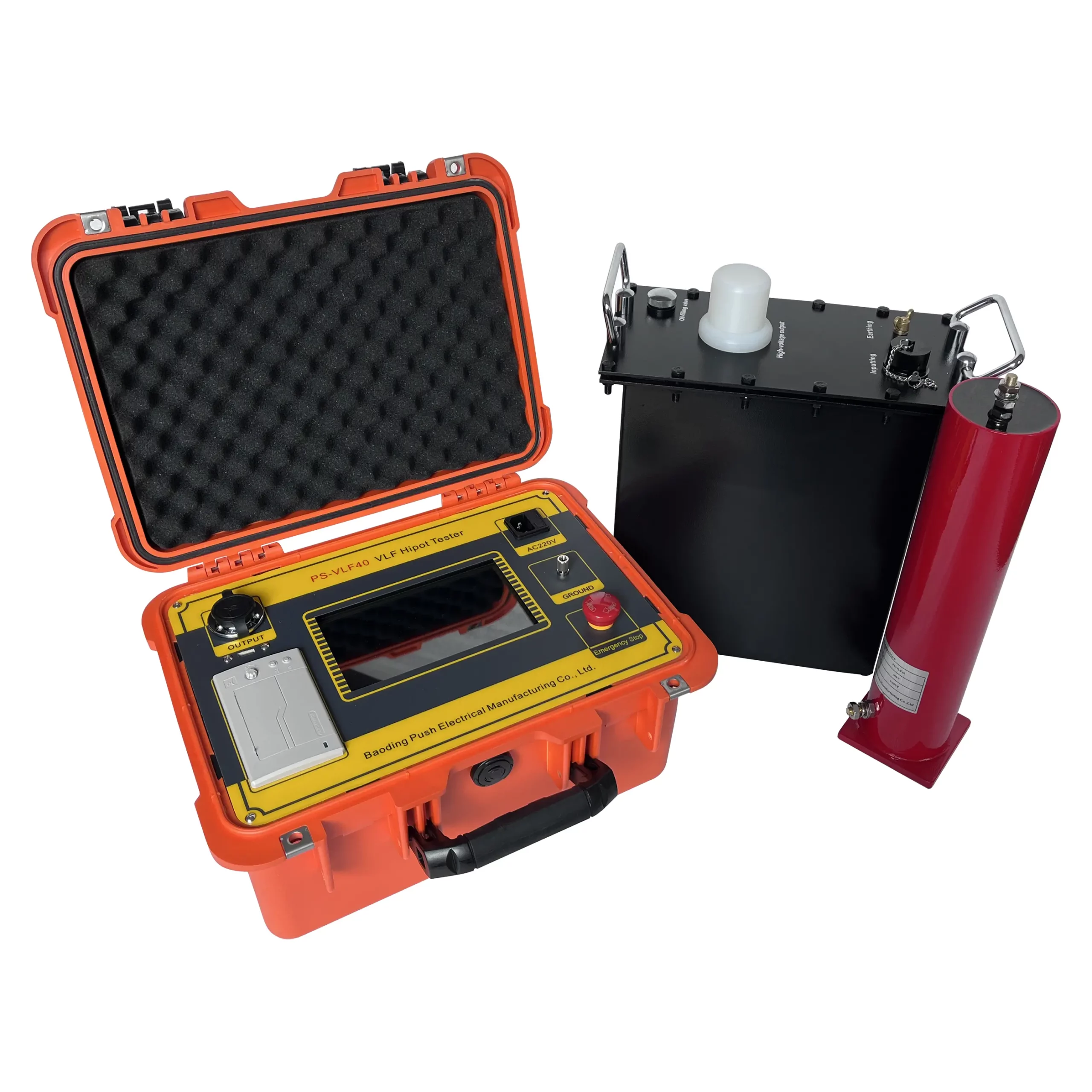When using a VLF AC hipot tester, operators should take precautions to protect themselves from arc flash hazards, which can occur due to high voltage and current levels.
Here are some essential safety measures:
- Wear Personal Protective Equipment (PPE):
- Arc-rated clothing: Wear arc-rated clothing that covers the entire body, including flame-resistant shirts, pants, coveralls, and jackets made from materials designed to withstand arc flash hazards.
- Insulated gloves: Use insulated gloves rated for the voltage levels being tested to protect against electric shock and burns.
- Safety glasses or face shield: Wear safety glasses with side shields or a face shield to protect the eyes from arc flash debris or projectiles.
- Arc-rated head protection: Wear an arc-rated hard hat to protect against head injuries from falling objects or arc flash hazards.
- Arc-rated footwear: Wear arc-rated footwear with non-conductive soles to protect against electric shock and burns.
- Maintain Safe Distances:
- Keep a safe distance from the testing area and ensure that bystanders are also at a safe distance to minimize the risk of injury from arc flash hazards.
- Follow the manufacturer’s recommendations for minimum approach distances when working near energized equipment or conductors.
- Use Insulated Tools:
- Use insulated tools and equipment designed for electrical work to prevent accidental contact with energized components and reduce the risk of arc flash hazards.
- Follow Lockout/Tagout Procedures:
- Implement lockout/tagout procedures to de-energize and isolate the equipment being tested before performing maintenance or testing to prevent accidental energization and arc flash hazards.
- Perform Risk Assessments:
- Conduct a thorough risk assessment of the testing environment to identify potential arc flash hazards and implement appropriate control measures to mitigate risks.
- Follow Safe Work Practices:
- Adhere to safe work practices and procedures when operating the VLF AC hipot tester, including proper equipment setup, vlf ac hipot tester test procedures, and emergency response protocols.
- Ensure that all personnel involved in testing operations are trained in electrical safety practices and aware of the risks associated with arc flash hazards.
- Use Remote Operation:
- Whenever possible, use remote operation features or control panels to minimize direct exposure to high voltage and reduce the risk of arc flash hazards.
- Emergency Response Preparedness:
- Establish and communicate emergency response procedures for dealing with arc flash incidents, including first aid, evacuation, and notification protocols.
By following these precautions and safety measures, operators can protect themselves from arc flash hazards when using a VLF AC hipot tester and ensure a safe testing environment for themselves and others involved in testing operations.

